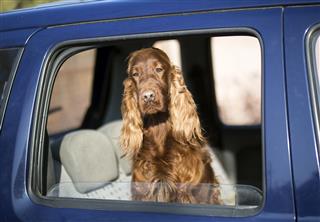
Abnormal lipase levels in dogs is an indication of possibly serious health problems. The following paragraphs discuss the significance of the lipase enzyme levels in dogs.
Similar to humans, a dogs’ body is made of protein enzymes that regulate the rate of various frequent chemical reactions that take place inside their bodies. Lipase is one of the most essential digestive enzymes that catalyze the process of hydrolysis of chemical bonds of fat (lipid) substrates. Lipase is a water-soluble digestive enzyme that plays an extremely crucial role in the process of fat absorption, transportation, and digestion. It is essential for breaking down various types of fats that are included in the dog food. For instance, animal fats, triglycerides, and oils. Lipase is secreted by various body organs, but the most significant amount of it is secreted by the pancreas. This type of dietary lipase is also called pancreatic lipase. When levels of the lipase enzyme are low or increase beyond its normal range, it becomes a cause of concern. Let’s learn more about it.
Normal Levels
There are different types of lipase, namely, pancreatic lipase, lipoprotein lipase, and colipase. Pancreatic lipase is secreted by the pancreas, while colipase is secreted by the kidney and its levels depend upon the glomerular filtration rate or GFR. Lipoprotein lipase is secreted by the vascular endothelium of the blood vessels. Since various organs secrete this digestive enzyme, various tests are required for the determination of the normal range of lipase in dogs. The most reliable methods used for dogs include Titrometric determination, Colorimetry, and Nephelometry.
Minimum levels of lipase enzymes in a healthy mature dog are around 0 to 50 IU/L. The maximum limit of this normal range is around 325 to 810 IU/L according to the same reports. All in all, 0 to less than 500 IU/L is the normal range of lipase in canines. Fluctuations of the normal range of lipase are easily observed by behavioral as well as physiological changes in the dog.
Low Levels
Commonly diagnosed conditions associated with low lipase levels in dogs include diabetes, high cholesterol levels, high blood pressure levels, vitamin deficiency, pancreatitis, kidney diseases, fatty liver disease and other such health conditions that are caused by reduced digestion of fats. When a dog is suffering from low lipase levels, he might show some common signs such as irritable bowel syndrome (IBS), frequent urination, bladder problems, diarrhea, loss of appetite, fatigue, obesity, hair loss, etc. If a dog shows a combination of these symptoms it is very important to consult a professional veterinarian. Trust them to diagnose the exact health issue of the dog and to prescribe proper medications and dietary changes to begin to manage your dog’s health.
High Levels
Similar to low lipase levels, elevated lipase level is also one of the major health problems for dogs. High levels of lipase could be an indication of the following: gastritis, bowel obstruction, peritonitis, visceral manipulation, neoplasia, hepatic diseases, etc. Several types of medications and acute pancreatitis in dogs are also some of the reasons that might elevate the lipase levels. When a dog is suffering from high lipase levels, symptoms seen can be vomiting, diarrhea, abdominal pain, kidney disease (and failure in worst cases), nausea, loss of appetite, lethargy, abdominal pain. If a dog owner finds a set or one of the aforementioned symptoms in the dogs; they should take the dog to a professional veterinarian for proper diagnosis.
The path of treatment for abnormal lipase levels in dogs is determined by the signs and symptoms observed and the fluctuations of lipase enzymes. Common treatments for such conditions include lipase supplements, crate rest/confinement, fluid therapy, antibacterial medications, vitamin supplements, and significant dietary changes.









